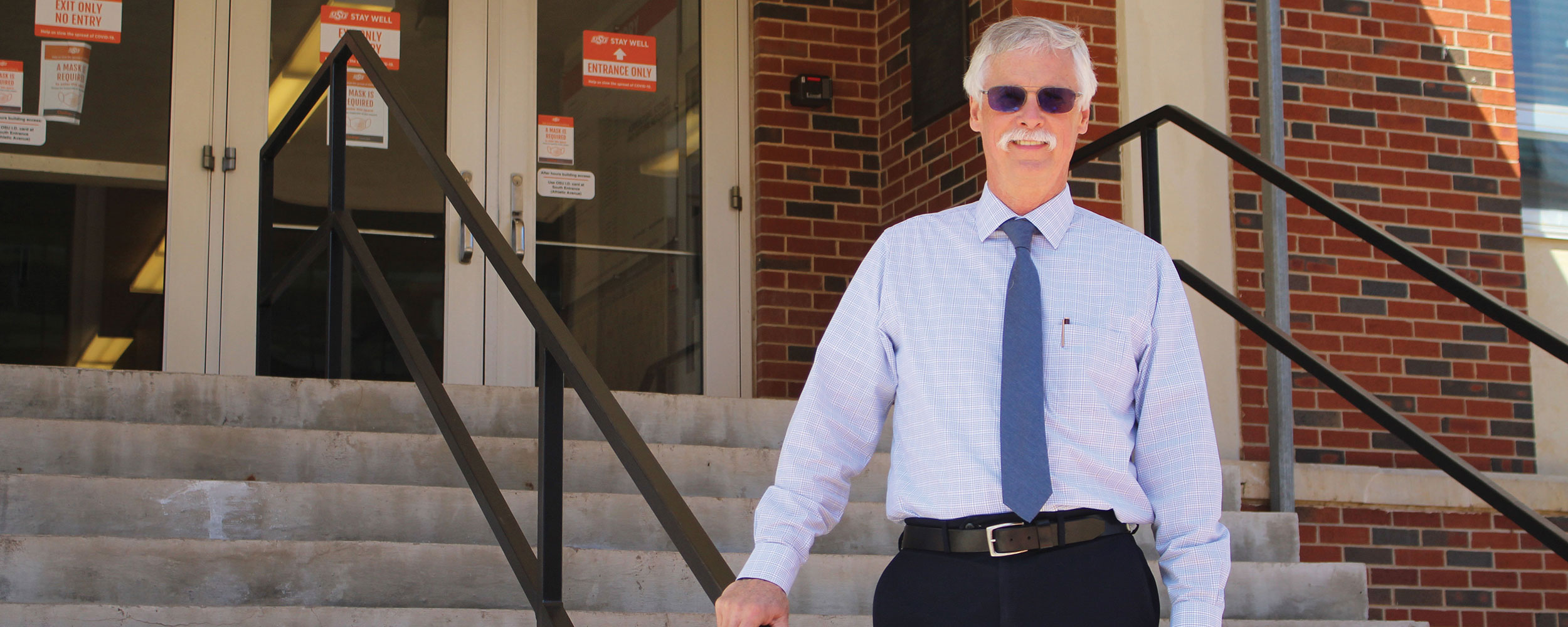
A Natural Treasure
Thursday, June 10, 2021
Media Contact: Samantha Siler | Communications and Marketing Manager | 405-744-2977 | samantha.siler@okstate.edu
Much like a natural treasure, the impacts of Keith Owens’ time at Oklahoma State University will continue to last for years to come.
After nearly 14 years serving in leadership positions in the OSU Division of Agricultural Sciences and Natural Resources, Owens plans to retire in July 2021.
Owens has provided leadership as the Oklahoma Agricultural Experiment Station associate vice president since 2014.
“I wanted to major in forestry based on the time I spent in the woods on my grandparents’ farm in Delaware,” Owens said.
Owens has undergraduate degrees in forestry and in range management from the University of Idaho. He has a master’s degree from the University of Wyoming and a doctorate from Utah State University, both in range management and range ecology.
“The range ecology came after I spent time in the natural ecosystems in the West,” Owens said.
Owens said he pursued research because he was always interested in why something happens.
“A lot of my friends during my undergraduate career were graduate students,” Owens said. “I got to help on their projects, which fueled my research interests.”
After completing his education, he became an assistant professor at Texas A&M University. He worked 20 years at a research and extension center in a position fully funded for research.
“I worked as a 100% research faculty member in the areas of plant water use, fire ecology and wildlife grazing,” Owens said.
Owens said being inquisitive and not giving up are two things that made him successful as a researcher.
“Some things must be repeated and corrected to get an answer,” he said.
In 2007, Owens joined the faculty at OSU as the first full-time department head for the newly formed OSU Department of Natural Resource Ecology and Management in the Ferguson College of Agriculture.
He spent seven years as the NREM department head. In Fall 2014, he was appointed to interim associate director of OSU Agriculture before officially taking the role of associate vice president in July 2015.
The NREM department was formed by uniting the OSU Department of Forestry, the range faculty from the OSU Department of Plant and Soil Sciences, and the wildlife faculty from the zoology program in the OSU College of Arts and Sciences.
“It wasn’t a seamless transition, but it worked well,” Owens said.
He credited the ease in the transition to the effort by the faculty and the positive attitude from students.
“Owens has served OSU to the best of his ability and to our benefit,” said Dave Engle, NREM faculty emeritus. “When he came into the newly formed department, he brought together people from different academic cultures.”
Engle said he considers Owens a great colleague and friend as well as an excellent research scientist and leader.
Owens has provided constant support for faculty, staff and students while challenging them to do good work, Engle said.
“He allowed us to be independent scholars,” Engle said. “He created an environment that encouraged excellence across the board.”
The NREM department still reflects the leadership Owens provided in his time as department head, Engle said.
“One thing Owens accomplished was to get faculty members, staff and students to pull together as one department,” Engle said.
Engle said he believes Owens was chosen to lead OSU Ag Research because he demonstrated his strong leadership abilities while serving as the NREM department head.
“Owens left NREM with departmental faculty and staff thinking he did a great job bringing the different departments and colleges together,” Engle said.
Thomas Coon, vice president and dean of OSU Agriculture, has worked closely with Owens in the leadership of OSU Agriculture, which includes the Ferguson College, the OSU Extension and OSU Ag Research.
Each has its own mission, and each mission is unique, Coon said. Administration’s task is to manage the three parts as one division, he added.
“Dr. Owens has been responsible for the research mission and for research infrastructure such as laboratories and field stations,” Coon said.
Coon said the administration works as a team to maintain the different stations and infrastructure.
OSU Agriculture has 18 research stations across the state and about 25,000 acres to manage, Owens said.
Owens’ position for OSU Ag Research requires extensive collaboration among the research stations, he said.
Owens also managed the financial resources for research, Coon said. The funds come from the federal and state government resources as well as grants faculty receive.
“Dr. Owens has a really strong sense of mission,” Coon said. “Accountability is really important to him as well as for those who hold positions funded by OSU Ag Research.”
Owens’ manner makes a difference, Coon said. His willingness to work with people and hold them accountable works well in various situations.
Listening is a key to being successful in administration, Owens said. He added the enjoyment of helping fac-ulty, staff and students succeed is an important part of being a leader.
“In any of my positions, the success of the individual depends upon the success of the people in the department or the people in the organization,” Owens said.
After retirement in July, Owens plans to spend time with his wife, Mia Elizabeth, traveling to visit his daughters and grandchildren, he said.
“We are a family that values education,” Owens said. “Among Mia and I, our three daughters and their husbands, we collectively have 21 academic degrees.”
Owens has five grandchildren with one more on the way, he said.
“We also have a wish to visit all the national parks in the United States,” Owens said. “We’ve been able to visit most of the parks in the West.”
Owens said they would like to split their time between their home in Stillwater and their home in Colorado.
“I will always remember the departments, students, faculty and staff,” he said. “Those interactions are important and something I’ll cherish.”
Story By: Rylee Reynolds | Cowboy Journal
